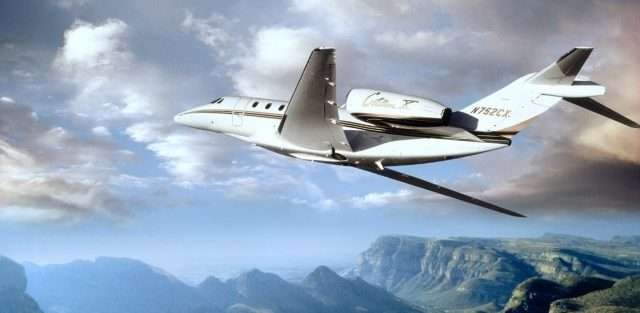Cruising Altitude

Cruising altitude is a level altitude maintained by a luxury jet charter while in flight. Once the aircraft takes off, it will continue to climb until it reaches its desired cruising altitude. This is determined by a number of factors, including:
- Payload
- Center of gravity
- Air temperature
- Humidity
- Cruise speed
Some smaller aircraft, such as a charter Cessna Caravan, have a maximum cruise altitude of 25,000 feet. On the other hand, it’s not uncommon for midsize turbojet aircraft (and larger) to have certified cruise ceilings in excess of 40,000 feet. When a luxury jet charter begins its flight plan, it is required to fly at a specific altitude for air charter safety reasons. It allows air traffic control to maintain safe vertical separation levels between aircraft. However, it’s not uncommon for the pilot in command to request a change in altitude during flight. One of the primary reasons for this is weather.
Achieving Optimal Performance
In order for a luxury jet charter aircraft to achieve the optimal combination of fuel efficiency and cruising speed, it needs to fly at a specific altitude. There are a number of physical factors at play here. The air is thinner the higher you go, so there’s less drag on the plane. That means the jet consumes less fuel to achieve the desired cruising speed. On the other hand, the thinner air also means there’s less available oxygen. As a result, engines don’t perform as efficiently. The trick is to find a cruising altitude that lets the jet operate at peak performance.
Cruising altitude is a level altitude maintained by a luxury jet charter while in flight. Once the aircraft takes off, it will continue to climb until it reaches its desired cruising altitude. This is determined by a number of factors, including:
- Payload
- Center of gravity
- Air temperature
- Humidity
- Cruise speed
Some smaller aircraft, such as a charter Cessna Caravan, have a maximum cruise altitude of 25,000 feet. On the other hand, it’s not uncommon for midsize turbojet aircraft (and larger) to have certified cruise ceilings in excess of 40,000 feet. When a luxury jet charter begins its flight plan, it is required to fly at a specific altitude for air charter safety reasons. It allows air traffic control to maintain safe vertical separation levels between aircraft. However, it’s not uncommon for the pilot in command to request a change in altitude during flight. One of the primary reasons for this is weather.
Achieving Optimal Performance
In order for a luxury jet charter aircraft to achieve the optimal combination of fuel efficiency and cruising speed, it needs to fly at a specific altitude. There are a number of physical factors at play here. The air is thinner the higher you go, so there’s less drag on the plane. That means the jet consumes less fuel to achieve the desired cruising speed. On the other hand, the thinner air also means there’s less available oxygen. As a result, engines don’t perform as efficiently. The trick is to find a cruising altitude that lets the jet operate at peak performance.








